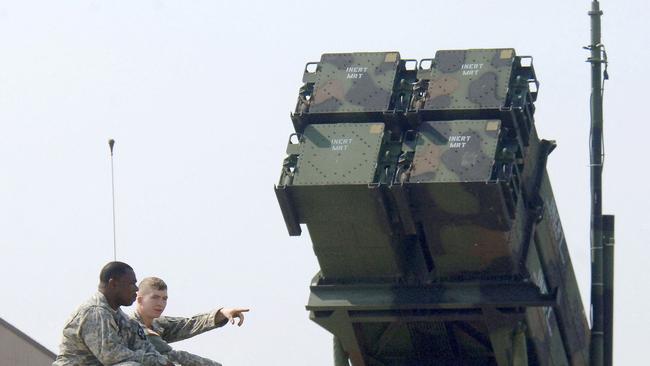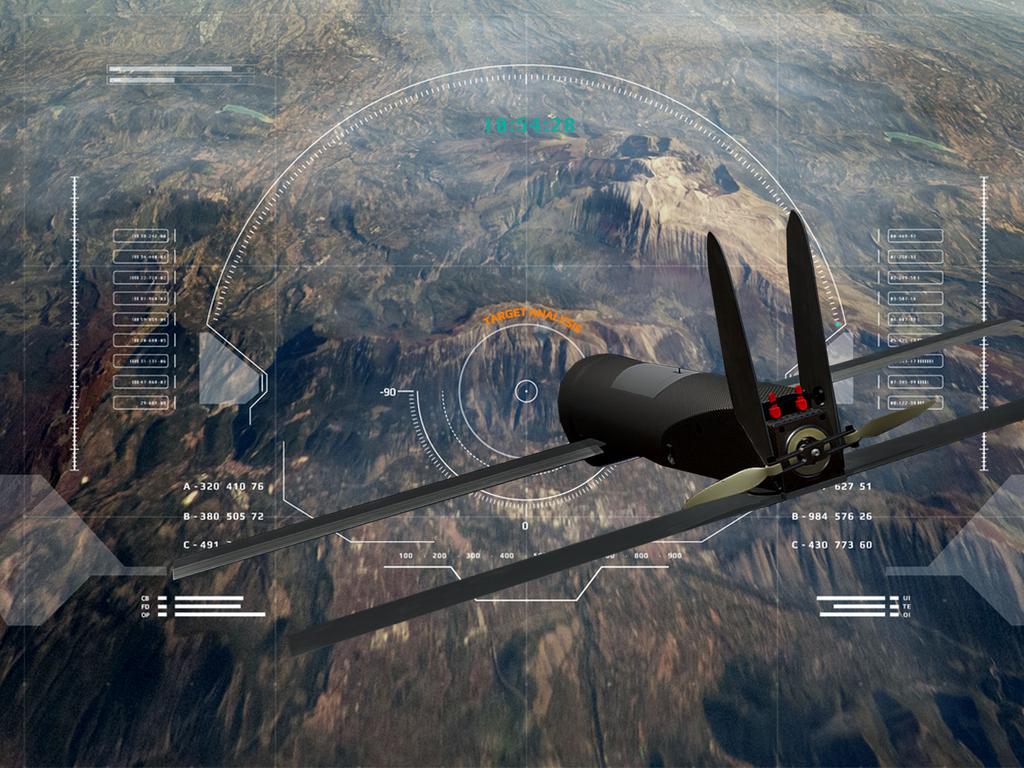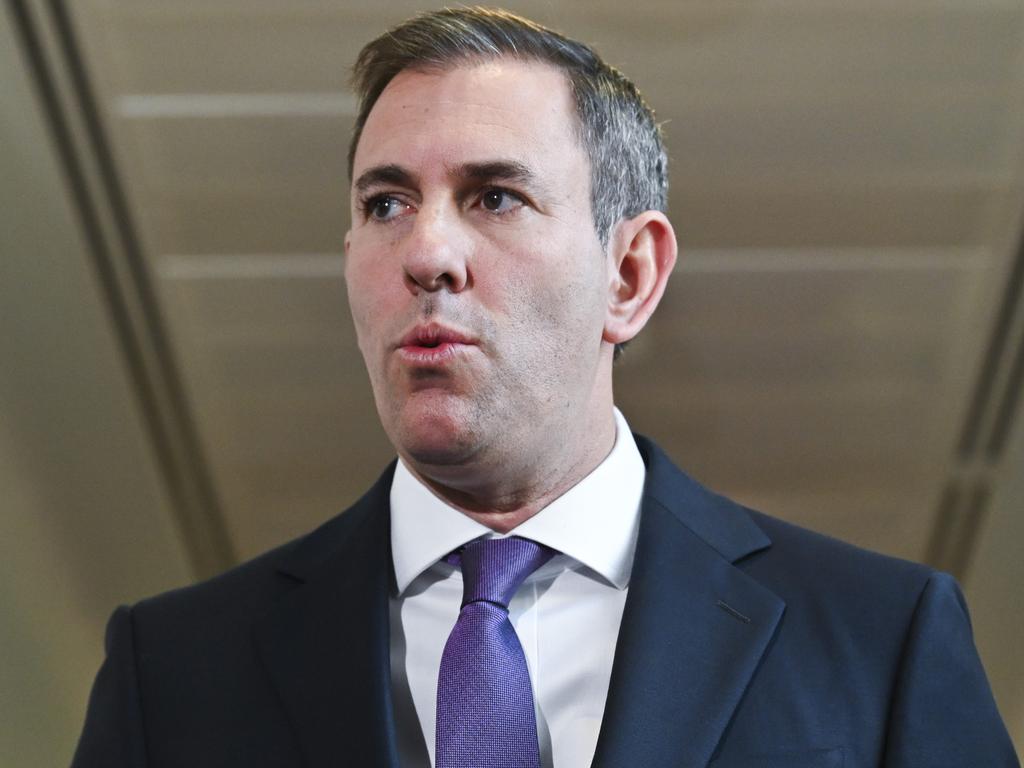Military personnel and bases left exposed to missile threats
Two of the nation’s most respected military commanders have warned Australian personnel and key bases will be vulnerable to missile attack for at least another decade.

Two of the nation’s most respected military commanders say Australian personnel and key bases will be vulnerable to missile attack for at least another decade unless the government finds the money for air defence systems or the US steps in to protect them.
Former chief of air force Geoff Brown and former chief of army Peter Leahy raised the alarm over the government’s failure to fund air and missile defence batteries as the government belatedly announced the purchase of the Australian Defence Force’s first armed drones.
Defence Industry Minister Pat Conroy revealed on Monday the army would get the US-made Switchblade 300, which can deliver a grenade-sized warhead over distances of at least 20km.
He refused to reveal how many of the weapons would be purchased, or the total size of the investment, citing “security reasons”.
The long-awaited procurement, which caught Australian drone manufacturers off guard, followed an admission in a recent Senate estimate hearing that there was no money in Defence’s $330bn investment plan for air defence missiles or launch systems.
This was despite a clear warning in last year’s Defence Strategic Review that the nation could no longer rely on its remoteness for protection, and the ADF needed to be “urgently” provided with a “layered air and missile defence capability”.
Air Marshal Brown backed the DSR’s conclusions, saying such systems “need to be a priority” to protect ADF personnel and assets. “I don’t think there’s any lack of recognition of the issue. You’ve just got to fund Defence to do it,” he said.
“The trouble is that with no new money, the (nuclear-powered) submarines take up 38 per cent of the budget.”

Air Marshal Brown said the absence of missile defence systems would likely force the US to provide the hardware needed to protect the nation’s Top End bases, which were shared with American forces and would play a key role in any US-China conflict over Taiwan. “They will need integrated air and missile defences, there’s no two ways about it,” he said. “At the moment, the Americans will probably bring their own, I suspect.”
Lieutenant General Leahy said the ADF’s failure to invest in missile defence systems was in stark contrast to the potential threat. “We know that likely adversaries have extensive and long-range missile capabilities and can rain them on our bases in the north of Australia,” he said. “We will be naked without a capability to interdict them.”
Lieutenant General Leahy said the government needed to “get serious and reprioritise” the budget to fund the necessary systems. “Right now we need a ‘guns budget’ but we have been lined up with successive ‘butter budgets’,” he said.
Deputy secretary for DSR implementation Tom Hamilton told Senate estimates on June 5 that after a “tough prioritisation” process – which included $72bn in internal cuts – the government had decided to focus on developing “the brains of the system” before investing in missile defence batteries.

“The government has been very clear that we will come back when the technology is ready and have a look at the next phase of acquisition, which will include acquisition of the active missile defence systems,” Mr Hamilton said.
Liberal senator David Fawcett took issue with his comment, pointing to Israel’s success in defeating incoming missiles. “The technology is ready,” the former RAAF test pilot told Mr Hamilton.
Air Marshal Robert Chipman, recently promoted to Vice-Chief of the Defence Force, said the government was still “considering options for integrated air and missile defence”. In the meantime, he said the navy’s air warfare destroyers, the RAAF’s fighter jets and the army’s short-range NASAMS surface-to-air missile batteries offered air and missile defence capabilities.

The so-called “brains” of the ADF’s future missile defences, known as the Joint Air Battle Management System, was earmarked for up to $7.7bn in funding in Defence’s investment plan released in April.
About $30bn that had been allocated for ballistic missile and medium-range air defence systems in the Coalition’s two-decade, 2020 force structure plan was nowhere to be seen.
Lieutenant General Leahy said: “It’s fine to have a command and control system but you don’t have capability until you’ve something to shoot.”
DSR lead author Peter Dean said the lack of funding for missile defence was “the biggest gap” in the Defence’s 10-year investment blueprint. “The war in Gaza and the war in Ukraine in particular have shown that when you are facing everything from drones all the way through to cruise and ballistic missiles, air and missile defence is absolutely critical,” Professor Dean said.

He said a new requirement for biennial updates to the investment plan meant there was still time for the government to come up with necessary funds. “I would encourage the government to re-look at this in the next iteration of the Integrated Investment Program and see how quickly we can get more capability into service more quickly,” Professor Dean said.
Defence analyst Marcus Hellyer said the wars in Ukraine and Gaza showed missiles and missile defence systems were now fundamental capabilities.
“What these conflicts are demonstrating is two things: land forces are very resilient in the face of missile and air strikes, and maritime forces are very vulnerable,” Dr Hellyer said. “There are different approaches but one is just to suck it up. And that seems to be the approach we are taking; that it is better value for money simply to harden our infrastructure and let the missiles through.”






To join the conversation, please log in. Don't have an account? Register
Join the conversation, you are commenting as Logout